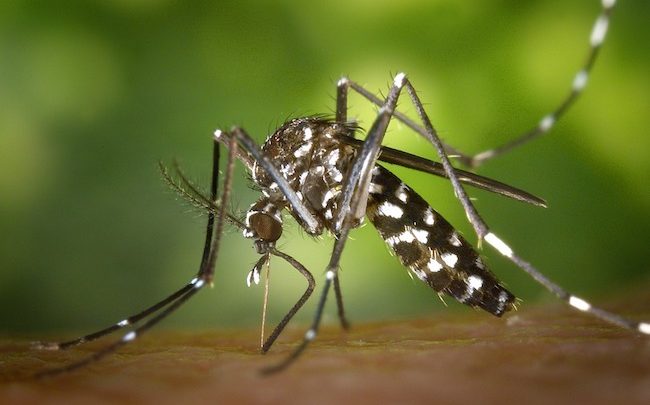
By Adrian Johansen
The 2015-2016 Zika virus outbreak gained national media attention. It’s rapid spread through multiple countries highlighted the threat that it posed to public health, increasing worldwide awareness of the toll it could take. When Zika made it to the United States, the country seemed to collectively hold its breath, but luckily the virus’ effect within the country was minimal.
While the media coverage of Zika has since died down, it’s important to remember that it’s still prevalent and still a threat in particular geographic areas.
Understanding the Zika Virus and Epidemic
The Zika virus falls into the same virus family as other mosquito-borne diseases including West Nile and yellow fever. Zika is particularly threatening because there are no vaccines that can prevent its transmission, and no medicines exist to treat the resulting infection.
Prior to 2015, Zika outbreaks were present in Africa, Southeast Asia, and the Pacific Islands. However, with the 2015 outbreak, Zika spread to reach as many as 90 countries and territories by March of 2018, including the United States.
The virus is most often transmitted when people are bitten by female Aedes aegypti mosquitoes who are infected with Zika. Mosquitoes can become infected by biting a person already infected with Zika, perpetuating the cycle and leading to a rapid spread of the virus. These mosquitoes are active both during the day and night, though they most frequently bite humans in the early morning and late afternoons. Pregnant women can transmit Zika to their fetuses, and the virus can also be transmitted via sex, needles, and blood transfusions.
While most people infected with Zika will not experience symptoms, some people may develop fever, rash, joint pain, or conjunctivitis. Muscle pain and headaches are less common symptoms. Zika is a significant threat to pregnant women, since it can cause microcephaly, a disorder in which babies are born with small heads. Zika can also cause miscarriage and birth defects such as eye problems, impaired growth, and hearing loss.
The 2015-2016 Zika outbreak met the criteria for classification as an epidemic; the disease occurred “in excess of normal expectancy.” It became a significant global health issue, and while the prevalence of Zika has greatly reduced, it remains a concern.

Zika: A Long-Term Concern
On November 18, 2016, the World Health Organization reclassified Zika, marking an end to the global health emergency that the virus had prompted. Zika had been previously designated as a “Public Health Emergency of International Concern.” While that designation was lifted, the World Health Organization stressed that Zika would now be regarded as a long-term concern requiring long-term research and vaccine development.
To effectively manage Zika to prevent future outbreaks, countries need to work together. One such collaborative relationship can be found in the work performed by the United States and Cuba. Both countries have made a commitment to cooperate on scientific and public health issues, such as Zika, dengue, and even cancer. Both countries worked to strengthen their collaborative efforts in these areas, with the goal of working together to make more progress than either country could make on its own.
Reducing Zika Risks
Zika may no longer be considered the public health emergency that it was just a few years ago, but it is still present and still a threat. Educating yourself about Zika and taking proper precautions can help to keep you safe from the virus.
When making travel plans, consider whether your destination is currently affected by Zika. The CDC maintains a travel recommendation map that identifies locations with current Zika outbreaks, a history of reported cases, a higher likelihood of infection because of the region’s elevation, and more. This information can help you to gauge the potential risks you’d face in traveling to a particular destination.
The CDC recommends that if you will be traveling, you avoid traveling to areas that are currently affected by the virus. This is particularly important for women who are pregnant or who hope to become pregnant, as well as for their partners (since Zika can be transmitted through sex, an asymptomatic partner could unknowingly transmit it to a woman). Women who are pregnant or trying to get pregnant should also discuss their travel plans with their doctors.
If you do travel to a Zika-affected region, you’ll need to wear insect repellent to help keep yourself from being bitten. You can also wear long-sleeved shirts and pants, and consider purchasing clothes that are treated with permethrin, an insecticide that helps to kill mosquitoes. Stay in a hotel that has screens on the windows and doors to keep insects out, and if your room doesn’t have screens, purchase a mosquito net to sleep underneath.
Protecting yourself against mosquito bites offers additional benefits. While mosquitoes do not transmit viruses like HIV, protecting yourself against mosquitoes can help to prevent you from being infected with other mosquito-transmitted infections like malaria and West Nile.The Zika epidemic may have come to an end, but Zika is still a threat in particular regions. With education, traveler precautions, and hopefully the development of a vaccine, we should be able to better control outbreaks and minimize the risk of Zika, worldwide.
*This post contains affiliate link(s). Click here for Affiliate Disclosure.




